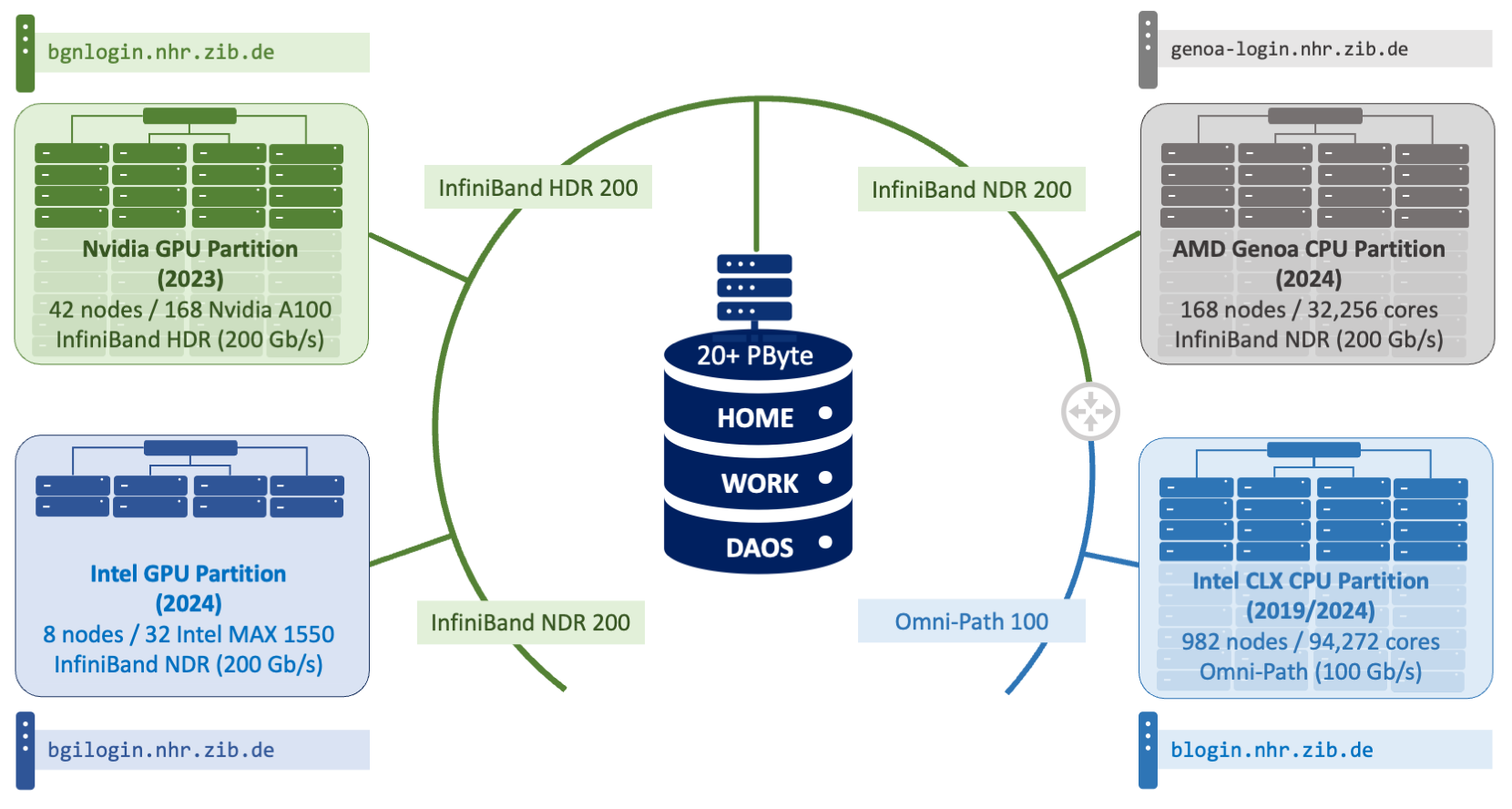Our Parallel and Distributed Computing Division evaluates, procures and operates supercomputer and large-scale on-line storage resources, enabling advanced simulation and data analysis workflows for science.
Introduction
The most powerful system being currently operated is part of the National High-Performance Computing Alliance (NHR). Consultants from physics and materials science, chemistry and bioinformatics as well as earth system research and engineering sciences provide advice to the researchers. The consultants support the efficient implementation of projects in both large-scale computing and data analysis, facilitating innovative research.
The NHR Complex "Lise" at ZIB
The NHR compute complex „Lise“ consisting of partitions with CPU and GPU computing nodes is operated by the NHR@ZIB center. It is complemented by a Peta-scale file system for on-line storage. For data archive a magnetic tape library with several tape robots in a separate high-security room is provided.
The NHR system “Lise” at a glance:

Large Storage Capacities for HPC & AI
In HPC, today’s complex computational workflows with HPC and AI workloads including pre- / post-processing require large on-line storage capacities. Even for increasingly on-the-fly computational methods the input and output data sets for individual jobs on the "Lise" system hit the Tera byte scale.
With the convergence of computer architectures for HPC and AI, large-scale storage capacities providing an optimal bandwidth to data sets become vital for current and future workloads.
Storage Infrastructure of the "Lise" complex at a glance:
- 20 PByte on-line storage capacity (including an 1 PByte SSD cache) is available in a globally accessible parallel file systems (Storage Scale) offering a high bandwidth access to application data in batch jobs.
- 0.5 PByte on-line storage capacity in a test instance of the Distributed Asynchronous Object Storage (DAOS) system.
- a Peta-scale tape library for archiving large data sets is operated independently by ZIB.
